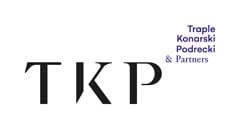News and developments
Rebranding using Twitter as an example. Will this change work out for the better?
Rebranding of large companies’ trademarks is not uncommon, but rarely does a name change generate as much excitement as in the recent case of the social media platform Twitter (currently X). We will look at this topic from the point of view of trademark law and try to assess whether legally such a choice was justified.
Recently, i.e. in July this year, the well-known social media platform Twitter underwent an abrupt name change and is currently called X. This event inspired me to raise the topic of rebranding using the example of precisely the famous Twitter.
To begin with, rebranding is the process of changing a brand's image, which can include changing the name, logo design, colors and other identifying elements. The purpose of rebranding is usually to improve customer perception of the brand and to bring it in line with changing market trends. Rebranding can also be related to the launch of new products or services or a change in the company's strategy. Typically, rebranding involves "refreshing" a company's image, by, for example, adding new graphic elements, changing the color scheme, or a new arrangement of logotype elements. It is then rebranding on an aesthetic level.
The rebranding done by Elon Musk should certainly be classified as thorough. What aroused the most excitement, however, was not the fact that there was a complete change of the platform's name, but the fact that Elon Musk voluntarily decided to replace such a valuable brand with, one could say, a simple X. For there is no doubt that the iconic bird logo is ubiquitously recognized and associated with Twitter.
From the point of view of trademark law, a sign in the form of an X can be considered a simple brand. Therefore, the question arises how to protect and enforce such a simple brand. It is common knowledge that Elon Musk did a rebranding as his mission is to launch an “everything app”. That would however encompass a very broad scope of goods and services for which the sign X will be used. There is no doubt that Elon Musk does not have a full monopoly over the letter X. Single-letter marks are relatively easy to register as soon as they are not descriptive with respect to the goods and services concerned. Moreover, the field for letter X trademarks is pretty crowded. It seems that Elon Musk did not apply to register a trademark for the new brand X. In the European Union Intellectual Property Office (EUIPO) alone, there are almost 300 registered trademarks consisting of the single letter X. Although most of them are stylized/logo X marks, there are a limited number of graphic possibilities with regard to one letter, and thus Musk’s X mark most probably resembles some trade mark/s already registered. It has to be said that the graphics of Musk’s mark are pretty simple, therefore, the risk of infringement is high. The same is true of the United States Patent and Trademark Office (USPTO), where the number of registered X trademarks is significant (over 1000 registrations). Furthermore, Twitter competitors, for example Microsoft Corporation or Meta Platforms Inc, are among the proprietors of X trademarks.
Taking the above into account, the main issue is whether Elon Musk will be able to obtain trade mark registration for his new brand. It can be reasonably expected that Elon Musk will face some difficulties in this regard. Musk might be a target for potential oppositions from proprietors of earlier X marks. Moreover, trade mark infringement lawsuits may be also filed, at least by the main rivals of Twitter. The situation can be even more complex in the light of the fact that the new X sign was established for the already mentioned “everything app”. This opens the door for even more disputes due to the wide range of goods and services for which the X sign will be used and potentially applied for .
Whatever happens in the trade mark sphere, it is surprising that a brand worth billions of dollars was replaced with the simple letter X, for which exclusive right will be difficult to obtain. Whatever the strategy is here, it will be interesting to observe how it will develop in the future. The large competitors will probably react to this rebranding, while the biggest problem will lie with smaller companies and entrepreneurs who, despite having prior rights, will not be able to fight such a powerful firm due to lack funds. Many of them might abandon defending their rights because of this obstacle.
However, the answer to the question whether this change will work out for the best is that it depends for whom. The X mark may not immediately be entitled to the scope of rights of a famous mark, but eventually it may get there. Given the large user base on Twitter and the number of people following this rebrand, it will probably not be very long before X is established as the platform trade mark and consumers associate it with Twitter’s services or brand. Therefore, this may work out for the best for Elon Musk eventually. At the same time, X-related trade mark proprietors may face several problems and might be forced to do rebranding themselves. Elon Musk’s decision as to the new name created confusion and concern. It cannot be considered as ideal, as it disregarded the existence of other pre-existing rights, the function of which is under threat.
Author: Justyna Sitnikow, LL.M.
